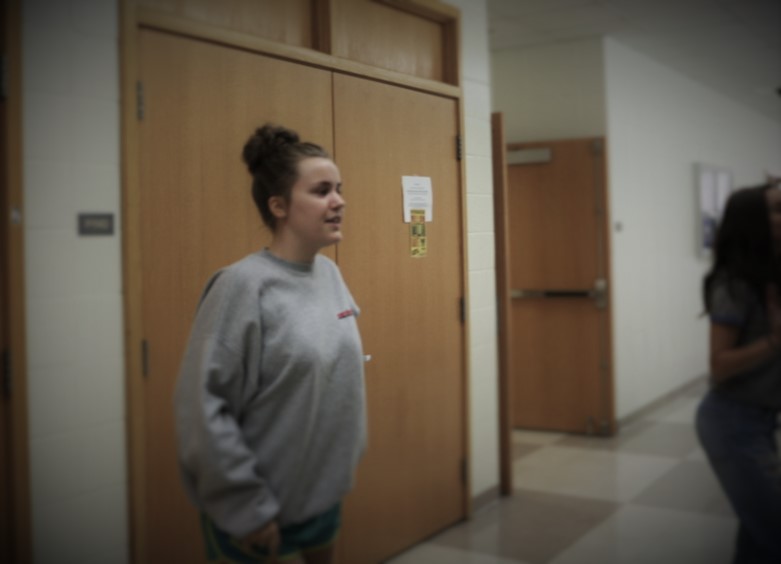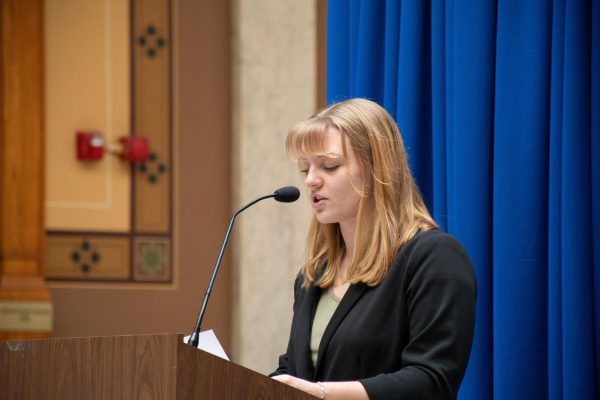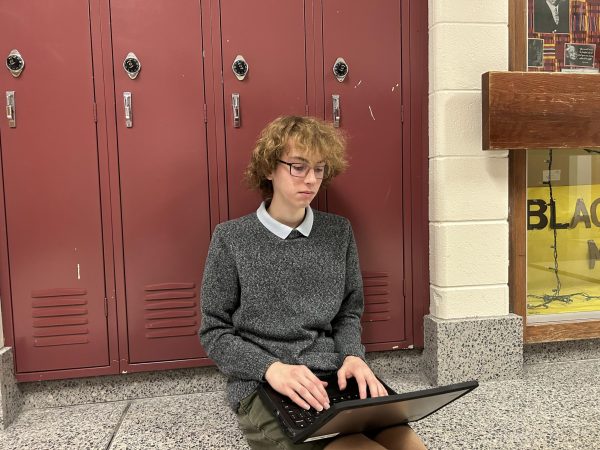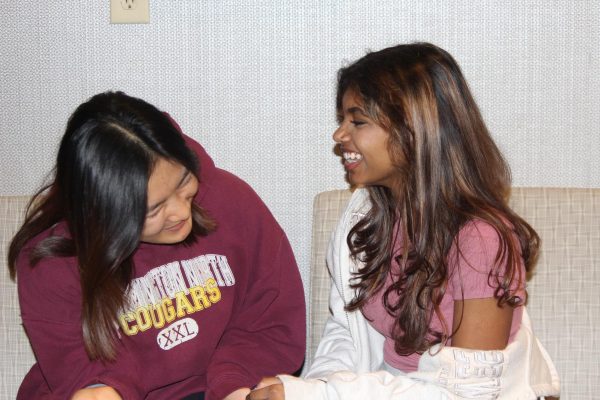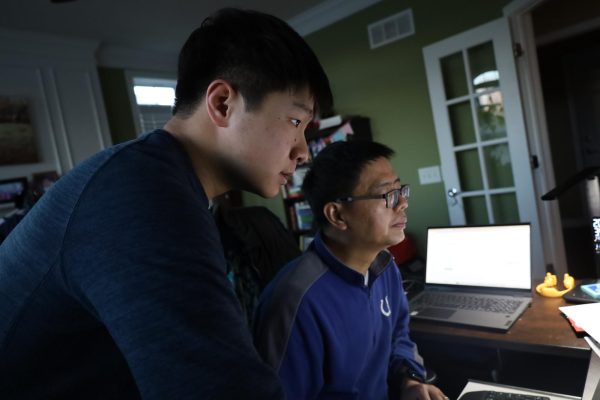CHS student discusses the causes of depression and how to deal with them
Junior Amelia Harrison has depression. She was diagnosed in the seventh grade, but she said the signs began to manifest themselves at the beginning of her fifth grade year. Since her diagnosis, she has found many misconceptions about the disease exist, and in general, the subject is somewhat taboo.
“I do feel that there is this stigma around depression and mental illnesses in general that it’s not okay to talk about it, and we suppress it,” Harrison said. “It’s okay to talk about it with your therapist and stuff, but you can’t talk about it in public. But I really think it shouldn’t be that way, because it’s a really prevalent thing in today’s society that should be talked about.”
In 1999 the U.S. Surgeon General declared stigma as one of the biggest barriers to adequate mental health care. According to Psychology today, this stigma’s effects can be seen in that people with mental health issues are more isolated from others, a phenomenon called social distancing.
Harrison said another misconception she has experienced is that many people believe that depression is simply sadness, which is not the case.
“It’s kind of like ‘how am I going to feel today?’ Because there are some days when I wake up and I’m feeling just fine; I don’t feel like I’m sad or anything. I can go out into the world and just take on life,” Harrison said. “And there’s other days where it’s like I just don’t want to get out of bed anymore.”
Dr. Sanjay Mishra, a child psychiatrist, said it is very important to understand the differences between simple sadness and depression.
“Usually sadness is something that we can all understand or relate to, because that’s just a normal part of human emotion… but depression is above and beyond that. You can think of depression as being sadness but with a lot of other attached symptoms,” Mishra said.
Harrison said these symptoms may vary.
“Depression affects people in many different ways, and same with other mental illnesses too. It doesn’t affect anyone the exact same way. For some people, it can really have an effect on their self-esteem, and others, it can have an effect on their emotions and their motivation.”
Mishra said he thinks of depression in kids in terms of emotional issues and behavioral issues.
Emotional issues can involve being “irritable, cranky, persistently bored,” he said.
Mishra said that people who have depression also might lose interest in things they typically enjoy or have changes in their appetite and sleeping patterns. Behavioral changes might involve “socially isolating oneself, not participating in activities, not caring for oneself, so your hygiene kind of gets kind of nasty, a change in friendships or social circles,” Mishra said.
“Obviously the real concerning stuff is when you start to do things (that are) self-injurious-type behaviors, like cutting on yourself, or drinking to excess or starting to use drugs. High-risk-type behaviors, a drop in grades… when we start to see these sort of things, these are all sort of red flags, and make us concerned that there may be some sort of underlying depression.”
He also described depression as being characterized by symptoms of helplessness.
“You’ll see kids complain of being tired or unmotivated… having a lot of negative thinking, feelings of hopelessness, thinking poorly of themselves,” Mishra said. “A classic one I’ll hear from my kids is feeling sort of stuck, or helpless, with regards to a lot of these symptoms.”
Mishra said a differentiating factor between sadness and depression is that in sadness, there is some factor of having control over your ability to function. “With depression it’s almost like sadness on steroids, where it’s almost like it’s so huge, it’s so persistent, it’s so overbearing and overwhelming, that at times you feel like you can’t help yourself. You can’t… unstick yourself.”
Harrison said that the high school environment can affect depression.
“I think Carmel High School is pretty mediocre in how they handle it. It’s not horrible or anything; we have access to counselors and anyone we’d need to talk to, but, at the same time, it’s just like at any other school where it’s not really a comfortable topic for anyone to talk about,” Harrison said.
Mishra said it’s not necessarily that the high school environment is unhelpful, but when depressed, ordinary stressors become extraordinary and overwhelming.
“So usually, when you’re not depressed, just maybe a little stressed or something, you’ve got exams coming up… that’s typical high school stuff, right? When you’re depressed, something as ordinary as having two exams in a week, can come across as ‘oh my God, I’m going to fail both of these exams, I’m overwhelmed, I can’t do it, this is too much.’ So things sort of get magnified at a huge extent.”
Mishra said the same thing can apply to social issues. “When you don’t have depression, a little tiff with your best friend… is usually not that big of a deal, or maybe if it is a big deal, it only lasts for five minutes, or maybe a day, or so. But when you’re depressed, then all of a sudden that little tiff with your best friend… suddenly becomes magnified. It can be overwhelming. It can almost at some points make you feel that you have no other choice but to harm yourself, or cut yourself or do something severe like that.
“Those negative thoughts can affect not only how you see yourself, but how you see the world, too. You’ve heard that classic phrase of when someone is very optimistic, they’re looking out through rose-colored glasses. When someone is depressed, they’re looking through clearly gray or black-tinted glasses… Everything takes on a very negative bent, and small stressors get to be huge, to be magnified to the greatest extents,” Mishra said. “When you are depressed, ordinary stressors can take on extraordinary proportions”
Mishra said schools are usually equipped to deal with the many stressors that high-school-age students face, and provide a resource in counselors and advisors for students to discuss their problems, but are probably not equipped to deal with more significant levels of depression.
“Most of them are going to be pretty careful about not diagnosing or treating… they’ll know when there’s a kid at risk, and then hopefully they’ll connect that kid at risk with someone who can actually engage in treatment if need be,” Mishra said. He said he thinks high schools usually do a good job of making students aware of the resources available to them if they have depression.
Harrison said it would be beneficial to sufferers of depression for the subject to become less taboo.
“Since it has such a toll on people’s mind and personality… they should just be able to talk about it, no matter what.”
Mishra said he also thinks that depression would be easier to deal with if people spoke about it more openly, and that the kids he treats are usually more susceptible to treatment if they are able to talk about their experience.
“Here are the three characteristics of kids that probably do the best within the context of therapy for depression: it’s the kids that are verbal, so they can attach words to feelings, they can attach words to what’s going on inside their heads and inside their minds… the kids that are fairly bright, sort of intellectual, that have the ability to step away and be able to evaluate and introspect and take responsibility for some of their acts… and the ones that are motivated, the kids that are there, and they come to my office because they really want help.
Harrison said ultimately, people should be able to discuss their depression, as it would be beneficial to them.
“Twenty years ago, it was the same situation with homosexuality. That was never, ever talked about inside schools, public places or anything, but people have slowly broken down that stigma, and it’s normal for most people now. People don’t feel like they need to hide it as much,” Harrison said.
She said she feels that this would be the case with depression and other mental illnesses if people began to be more open with discussion about them.
“They’d be willing to talk about it with their friends, and be real with everyone, and not be trying to put on a mask.”
Your donation will support the student journalists of Carmel High School - IN. Your contribution will allow us to purchase equipment and cover our annual website hosting costs.



















![Joseph Broman, Mu Alpha Theta sponsor, grades tests for his honors precalculus/trigonometry class. Broman said, “I’m retiring from the Math Club next year and I’m just going to do Mu Alpha Theta so I can focus on that one and we can do more [speaker series] first semester.”](https://hilite.org/wp-content/uploads/2024/03/IMG_9502-1200x900.jpg)










![British royalty are American celebrities [opinion]](https://hilite.org/wp-content/uploads/2024/03/Screenshot-2024-03-24-1.44.57-PM.png)


![The new “Kung Fu Panda 4” movie: a journey of growth, self-realization and adventure [opinion]](https://hilite.org/wp-content/uploads/2024/03/po-1200x588.png)


















![Review: “The Bear” sets an unbelievably high bar for future comedy shows [MUSE]](https://hilite.org/wp-content/uploads/2024/03/unnamed.png)
![Review: “Mysterious Lotus Casebook” is an amazing historical Chinese drama [MUSE]](https://hilite.org/wp-content/uploads/2024/03/0.webp)
![Thea Bendaly on her Instagram-run crochet shop [Biz Buzz]](https://hilite.org/wp-content/uploads/2024/03/IMG_0165-1200x838.jpg)
![Review: Sally Rooney’s “Normal People,” is the best book to read when you are in a time of change [MUSE]](https://hilite.org/wp-content/uploads/2024/03/20047217-low_res-normal-people.webp)
![Review: “One Day” broke me for the second time, but this time it hurt worse [MUSE]](https://hilite.org/wp-content/uploads/2024/03/unnamed-8.png)
![Review in Print: Maripaz Villar brings a delightfully unique style to the world of WEBTOON [MUSE]](https://hilite.org/wp-content/uploads/2023/12/maripazcover-1200x960.jpg)
![Review: “The Sword of Kaigen” is a masterpiece [MUSE]](https://hilite.org/wp-content/uploads/2023/11/Screenshot-2023-11-26-201051.png)
![Review: Gateron Oil Kings, great linear switches, okay price [MUSE]](https://hilite.org/wp-content/uploads/2023/11/Screenshot-2023-11-26-200553.png)
![Review: “A Haunting in Venice” is a significant improvement from other Agatha Christie adaptations [MUSE]](https://hilite.org/wp-content/uploads/2023/11/e7ee2938a6d422669771bce6d8088521.jpg)
![Review: A Thanksgiving story from elementary school, still just as interesting [MUSE]](https://hilite.org/wp-content/uploads/2023/11/Screenshot-2023-11-26-195514-987x1200.png)
![Review: When I Fly Towards You, cute, uplifting youth drama [MUSE]](https://hilite.org/wp-content/uploads/2023/09/When-I-Fly-Towards-You-Chinese-drama.png)
![Postcards from Muse: Hawaii Travel Diary [MUSE]](https://hilite.org/wp-content/uploads/2023/09/My-project-1-1200x1200.jpg)
![Review: Ladybug & Cat Noir: The Movie, departure from original show [MUSE]](https://hilite.org/wp-content/uploads/2023/09/Ladybug__Cat_Noir_-_The_Movie_poster.jpg)
![Review in Print: Hidden Love is the cute, uplifting drama everyone needs [MUSE]](https://hilite.org/wp-content/uploads/2023/09/hiddenlovecover-e1693597208225-1030x1200.png)
![Review in Print: Heartstopper is the heartwarming queer romance we all need [MUSE]](https://hilite.org/wp-content/uploads/2023/08/museheartstoppercover-1200x654.png)













